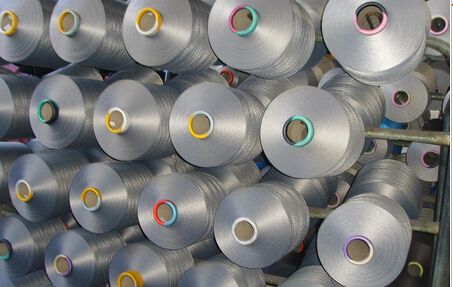What are the effects of additives on nylon fiber dyeing?
Nylon fibers are often dyed with acidic dyes, and the leveling agents for acidic dyes mainly include anionic, cationic, and nonionic types. Anionic leveling agents have a certain affinity for fibers in acidic media and compete with dye anions for dyeing. Their affinity is lower than that of dye anions, but their dispersion rate is faster.
At the beginning of dyeing, the anionic leveling agent competes with the dye for the dye seat. Due to their fast dispersion rate, they dye the fiber before the dye anion and combine with a NH on the fiber. Then, they are gradually replaced by the dye anion with high affinity for the fiber, which reduces the initial dyeing rate of the dye and achieves the leveling effect. Cationic and non-ionic leveling agents achieve leveling effect by binding with dye anions, reducing the effective concentration of dye anions, and gradually releasing dye anions during the dyeing process.

In addition, factors such as dyeing time, dye compatibility, dye concentration, bath ratio, and dye circulation rate can also affect the uniformity of nylon dyeing.
Article source: Nylon colored yarn
-
05-27
The reason why fabrics containing spandex are prone to yellowing
Spandex is a commonly used fiber variety in our daily lives, characterized by good elasticity, low fineness, high elastic modulus (cracking elongation can reach 400-800), and low specific gravity. Spa
-
04-24
Colored non dyed nylon with synthetic fiber raw material
The current conventional fiber coloring mostly uses yarn dyeing method, which has long process, high loss, high cost, and the product has color difference and low color wash fastness. Yarn is prone to
-
03-26
What are the characteristics of non dyed spandex?
Non dyed spandex has also been widely used in recent years. Non dyed spandex fiber can be blended with fibers such as nylon, polyester, acrylic, cotton, wool, etc., which can give fabrics excellent el
-
02-24
The influence of yarn structure on fabrics
The basic characteristics of yarn include its appearance and shape, twisting characteristics, fiber transfer and distribution characteristics in the yarn, as well as the surface fuzz and internal loos
